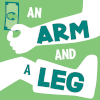

Get Started Free
Like a fire with no one to call: 'We've left no latent capacity in health care.'
17 Min
Podcast

Dan Weissmann
Ryan Gamlin spent a decade working on the financial side of health care, before going to medical school. Now, as an anesthesiologist in Los Angeles, he’s on the front lines fighting COVID-19, an experience he describes as “scary, in a way that I never expected to be scared, going to work.”He was scared one day last summer, too, when a California wildfire came within feet of the hospital where he was working. And then a fleet of fire trucks showed up to protect the hospital. “City, county, park service, forest service, new trucks, old trucks, unmarked trucks.”“As I drove home later that day through the protective ring of equipment, I realized the fundamental difference between public safety and health care. Public safety is built on latent capacity. We pay for people and equipment to stand idle, over-prepared for emergencies.”These days, he’s been thinking back to that experience.“We’ve left no latent capacity in health care,” he wrote in a Twitter thread. “And some part of the tragedy that’s now unfolding in this country is because of that. Because we let health care become a business. And because businesses don’t keep a hundred extra fire trucks around, their crews trained and ready, just in case.”We talked with Ryan about his experiences for this week’s episode. With protective equipment in short supply, he said, "It felt like a fire, with no one to call."We ALSO hear some good news, about folks who are stepping up to help — tapping their own latent capacity.That includes people making "ear savers" for health-care workers. Turns out, if you wear a mask all day, the elastic rubs the heck out of the skin behind your ears. Some people are 3-D printing connectors that go around the back of the head.And some people are taking a more low-tech approach. Here's a picture of my friend and neighbor Liz Feldman is the medical director at a local clinic. She's modeling ear-savers that are basically fabric headbands, with buttons sewn in to hold the masks in place, made by a retired colleague from old t-shirts and scavenged buttons. Hosted on Acast. See acast.com/privacy for more information.
Explore Aura




